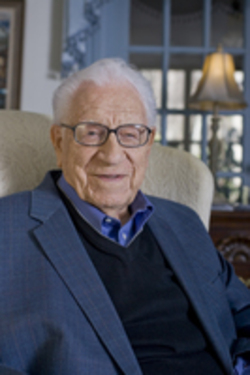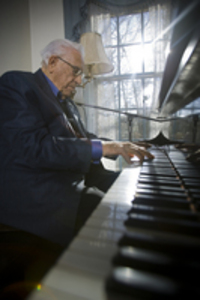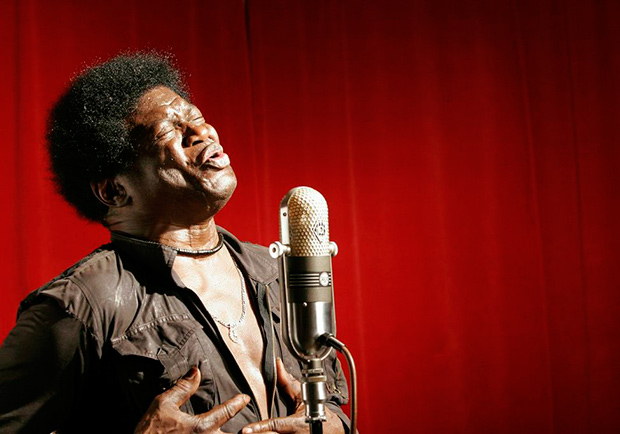In this series: Giving People a Theology of Suffering
Jesus told his followers, Go and make disciples of all nations. Pastors know well that no two people under their care are in the same place spiritually. Making and growing disciples involves taking peoples spiritual temperature, helping them confront and address sin, guiding them to develop a love for Scripture, and much more. This Common Challenge covers ways you can introduce, initiate, and instruct the entire congregation into the life of allegiance to Christ.

Editor’s Note: This article was originally written in 2013 after the death of Matthew Warren. Sadly, this is a topic that remains relevant in churches across the country. After the recent suicides of Kate Spade and Anthony Bourdain, we’ve decided to share Amy Simpson’s wisdom with you once again.
There's a lot in the news about depression and suicide these days, since the April 6 news of Matthew Warren's death brought it into the public eye. But although depression may be the most well-known and widely understood mental illness, it's still mostly hidden within the church—and this is a big problem. Just because we don't discuss it much doesn't mean it's gone. Ten percent of American adults suffer from depression, and more than 38,000 people die by suicide each year. Plenty of the people represented by these statistics will be sitting in church next Sunday morning.
One quarter of people who seek treatment for mental disorders go first to a member of the clergy. This is higher than the percentage of people who go to either psychiatrists or general medical doctors.
Most church leaders are very aware of the challenges depression and other mental illnesses present within the context of ministry. Some have experienced the devastating concussion of a suicide within their congregation, or close to it. But when it comes to mental-health problems, people in ministry can feel as lost, intimidated, and fearful as most others. In my book Troubled Minds: Mental Health and the Church's Mission, I cite results of a survey I conducted through Leadership Journal, BuildingChurchLeaders.com, and other publications for people in Christian ministry. Among the 500 leaders who responded, 16 percent indicated they feel "not equipped at all" to minister to people with mental illness. Another 53 percent feel "somewhat equipped." Only 30 percent feel at least "competent."
When a mental-health crisis hits, it shouldn't catch you off guard. The best time to address depression and suicide is before someone needs crisis intervention.
Here are some steps you can take.
• First, understand that depression is a disease; it's not a failure of the will or a triumph of self-indulgence, and people can't just "get over it." It's not simply a spiritual problem requiring a spiritual solution. Your basic understanding will affect the way you react when you realize someone in your church is suffering.
• Get some basic education, and learn to watch for symptoms of depression and warning signs that someone is considering suicide. Consider yourself at the front lines of mental-health care. One quarter of people who seek treatment for mental disorders go first to a member of the clergy. This is higher than the percentage of people who go to either psychiatrists or general medical doctors.
• If you believe someone is in immediate danger or presents an immediate threat to someone else, call the police. This is not the time for second-guessing or trying to address the problem yourself.
• Acknowledge your own fears about depression and other mental illness, and take them before God. Many of our most natural reactions to mental-health problems are based in fear—either fear of the suffering person, fear that we are getting in over our heads, or fear that acknowledging someone else's mood disorder means we have to acknowledge the possibility that depression can strike anyone—including ourselves. Most of these fears are irrational. Ask God to make you a bold and wise person and to remove fears that are not based in reality.
• Wrestle with your theology of suffering and how it relates to mental illness. Recognize how depression and other mental illness fits within Christian teaching on the effects of original sin, the presence of sickness in our world, God's unconditional love, redemption in this life, and complete healing in the next. Come to peace with the questions you can't answer and the overriding hope you can offer through Christ's love, his purpose for all people, and his coming renewal of all creation. There is no need for you to have all the answers, but you must face these questions and rest in God's truth, or your own uncertainty will leave drowning people without a lifeline.
• Assemble a library of resources you can share with struggling people and their families. Include books, a list of helpful websites, pamphlets, a list of local counselors, and contact information for your local branch of the National Alliance on Mental Illness (NAMI), where individuals and families can find support groups and education.
• Before you need it, create a network with local mental-health professionals. Get to know the Christian counselors in your area; you may have some in your own congregation. Be sure your network includes professionals from across a spectrum of specializations—not just depression, but also anxiety disorders, eating disorders, Autism Spectrum disorders, psychotic disorders, and others.
• Work with your local NAMI chapter to host faith-based training for your church and the community.
• Consider Mental Health First Aid training for you and perhaps your entire church staff. This course will help you understand the basics of various types of mental illness and how to respond.
• On a regular basis, consult with a mental-health professional or consultant. You can discuss ways to interact with and support people suffering from depression and other conditions. If you can't afford to pay for this consultation on your own, pool resources with a few other church leaders to share the cost of consultation and meet together with that person once a month.
• If someone in your church is in treatment for depression or another mental illness, request that he or she sign a consent form allowing you to consult with the relevant professional. If you do receive that consent, ask the mental-health professional specifically how you and your church can support the person's treatment and ongoing pursuit of health. Be sure you keep all discussion strictly confidential.
• With your church, acknowledge mental-health awareness month in May. Use it as an excuse to discuss mental health in sermons, classes, and Bible study groups. People in your church probably need to hear pastors and other leaders discuss mental health for two reasons: to normalize the experience for people who feel marginalized and ashamed, and to help address theological questions about mental and emotional suffering.
• Don't forget the families of suffering people! Loved ones need support too; living with and caring for someone with depression or another mental illness can be extremely challenging. Check in with them, ask them what they need, and be prepared to do what you can to help.
• Recognize the likelihood that someone suffering from depression or another mental illness is suffering a spiritual crisis as well, particularly the first time symptoms take hold. Even while a person is receiving treatment, spiritual nurture is critical. Ask if you can pray with the person or listen or just sit nearby for a while. Assure the person that God has not abandoned him or her (Romans 8:35-38), and don't deviate from this message.
When you signed up for church leadership, you may not have realized you were signing up for mental-health intervention. But ready or not, many suffering people walk through the doors of your church each week, and faithful ministry in the name of Christ does not allow us to simply ignore problems like depression and suicide. In partnership with mental-health professionals, you can play an important role in helping hurting people—and now is the time to prepare.
Amy Simpson is author of Troubled Minds: Mental Illness and the Church's Mission (InterVarsity Press). She also serves as editor of Christianity Today's Gifted for Leadership. You can find her at www.AmySimpsonOnline.com and on Twitter @aresimpson.




















